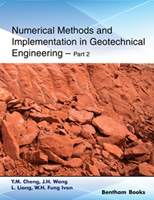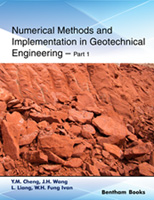The construction industry is well known for its high impact on the environment; however, no mechanisms for its evaluation and control have yet been made readily available, due, fundamentally, to the difficulty of defining its boundaries and the corresponding pollutant emissions. The industry needs to establish the emission sources and, if applicable, its sinks and/or mitigating factors. From this perspective, buildings are directly responsible for the generation of pollutants during their construction and operation, for water and electricity use and waste generation and also, indirectly, for emissions due to the transportation of material and occupants to and from the building site.
In this framework, the Ecological Footprint (EF) methodology is adapted to the building sector, and a model which evaluates the particular case of the construction of buildings is presented. The EF is a relatively new indicator that aims to establish results that are more intuitive of the impact on the territory of economic activities. From this point of view, the relationship of the buildings with the territory, where they are located, is defined empirically and visually, and the associated impacts are identified.
Given the difficulty in establishing a general model for the building industry, the present book focuses on the study of the construction of buildings, which constitutes the most significant impact in the territory, and, undoubtedly, the most aggressive impact from the planning point of view, since the activity is performed intensively for a relatively short period of time.
A methodology is defined as the first step towards the creation of an effective assessment of the EF of this type of construction. The procedure is based on the project budget and its bill of quantities, organized by means of a systematic construction-work breakdown structure that divides the work into three major categories: materials, manpower, and machinery. Each stream generates partial footprints (i.e. energy, food, mobility, construction materials, and waste). The methodology is structured in such a way that it can be adapted to any construction project that has a detailed budget and that is based on a work breakdown system.
Therefore, the present work provides a step forward in the modelling and analysis of the effects of building activity on the environment in order to identify strategies for the reduction of this impact. The book is divided into two parts: the theoretical model for calculation of the footprint of residential buildings during their construction; and the case study of the construction of an apartment building in Huelva, Spain.
The first part describes the EF indicator and its adaptation to the building construction sector. The sources of impact are the most relevant part of the analysis due to the effect of a wide variety of building elements on the calculation of the EF. The main sources of impact are grouped into direct impacts, indirect impacts, waste, and built land. The direct impacts are those taking place directly on the construction site: energy (fuel and electricity) and water. The indirect impacts refer to the construction materials (embodied energy) and manpower (food and mobility).
The second part consists of three steps. First, the general characteristics of the project under study are summarized: land type and actions to be taken on the land (detailed construction project, land subdivision, and project development). The second step explains how to apply the proposed formulation to the impact factor parameters. Finally, in the third step, the footprints associated with these impact factors are calculated: energy, water supply, food consumption, mobility, construction materials, waste, and constructed land footprints.
In an innovative approach, the evaluation is directed to professionals in the construction sector who normally deal with project budgets and well understand the work breakdown systems employed for the classification and organization of construction work units.
The methodology, applied here to a Spanish construction project, can equally be employed for construction classification systems of different countries. The aspects that are dependent on the region where the project is located are: the workforce food intake, the electric mix, the transportation systems, and the waste generation rates.
ACKNOWLEDGEMENT
Acknowledgements- Ministry of Innovation and Science, through the concession of the R+D+I project: Evaluation of the EF of construction in the residential sector in Spain. (EVAHLED). 2012-2014. Ministerio de Innovación y Ciencia, por la concesión del Proyecto I+D+i: Evaluación de la huella ecológica de la edificación en el sector residencial en España (EVAHLED). 2012-2014.
CONFLICT OF INTEREST
None Declared.





